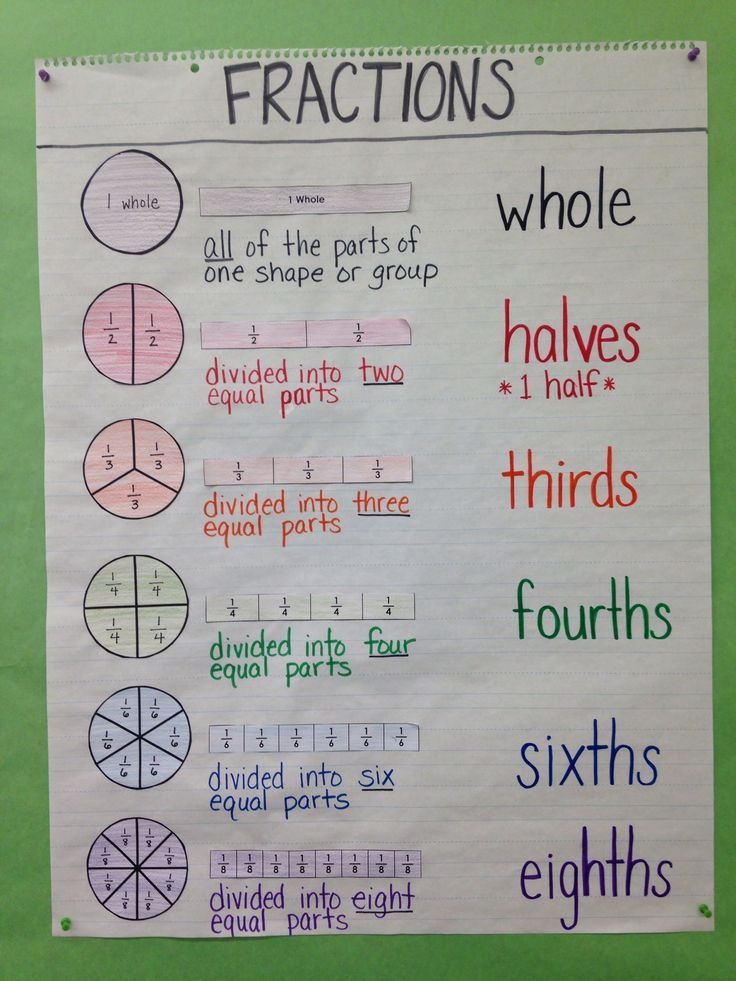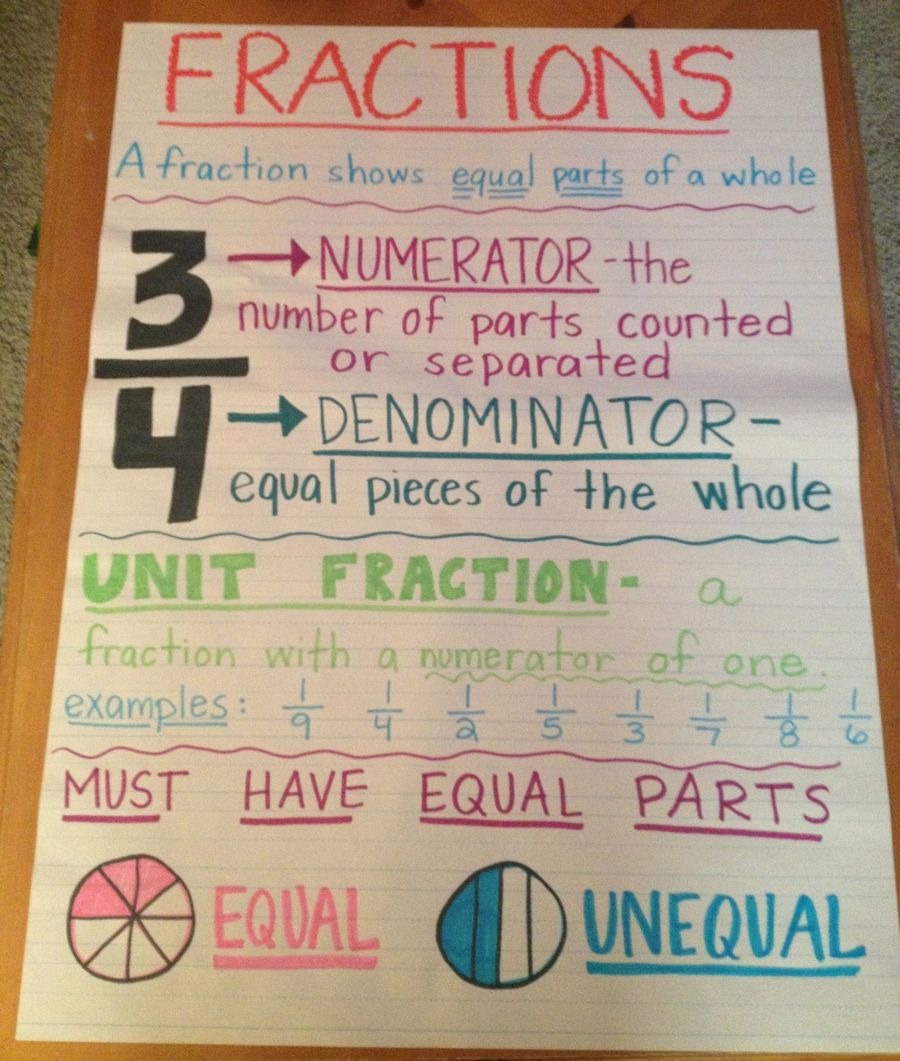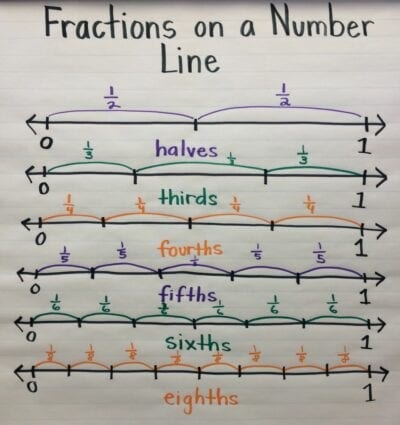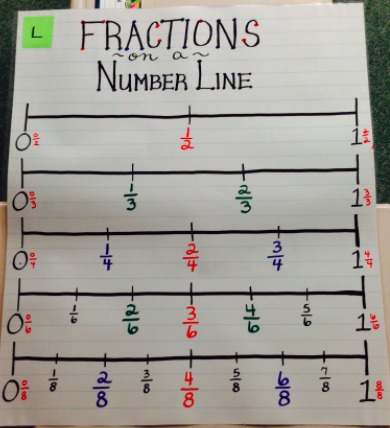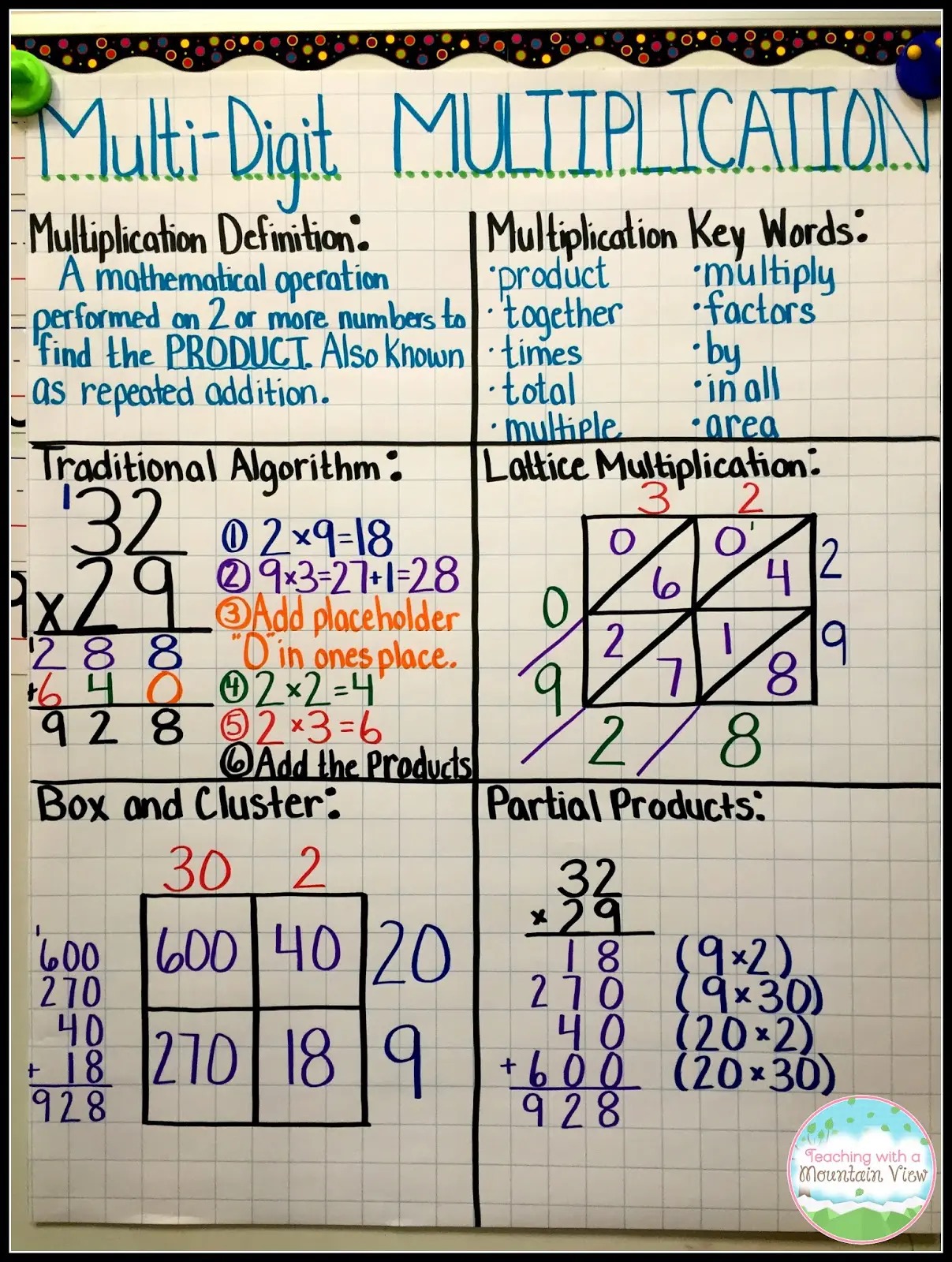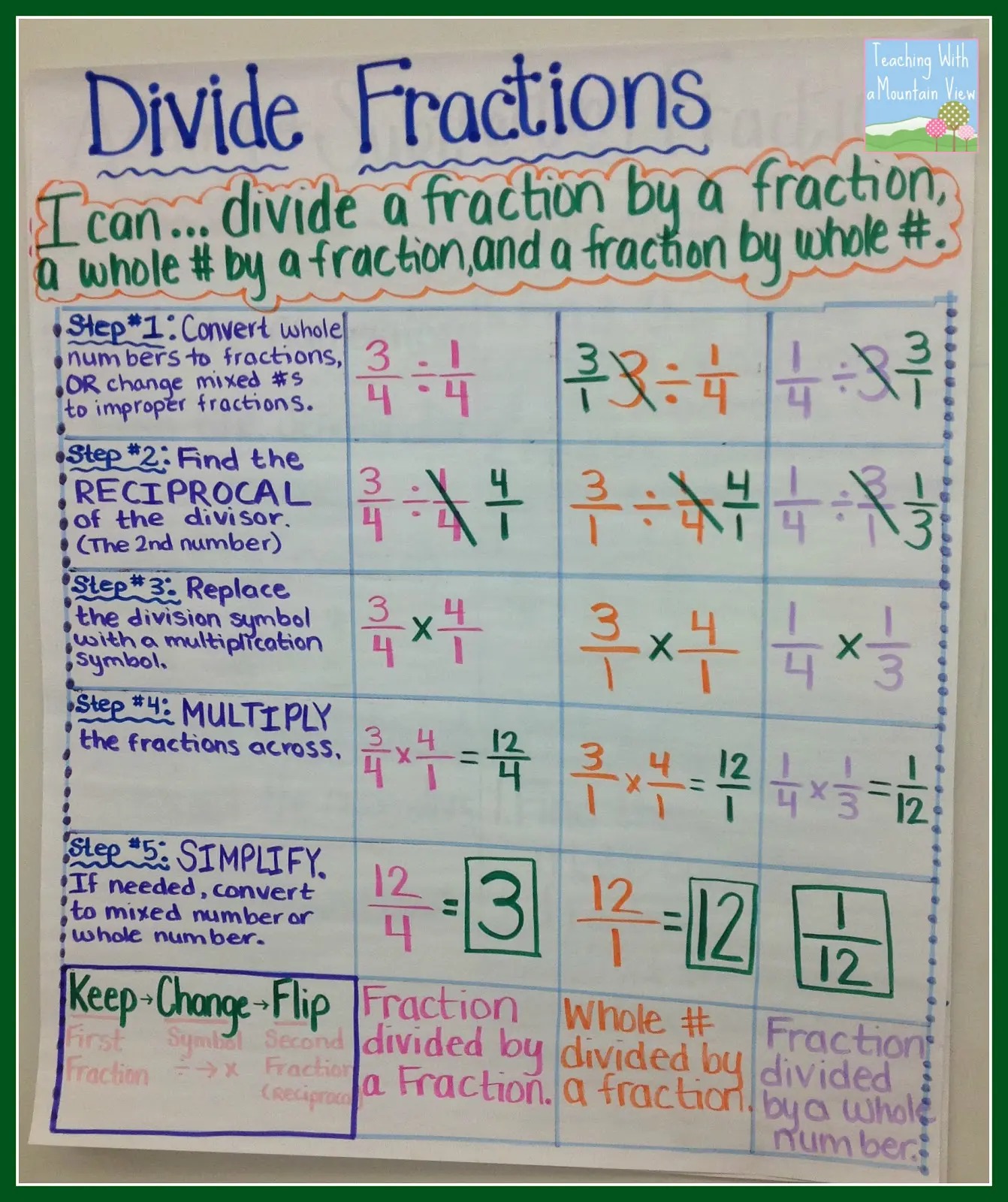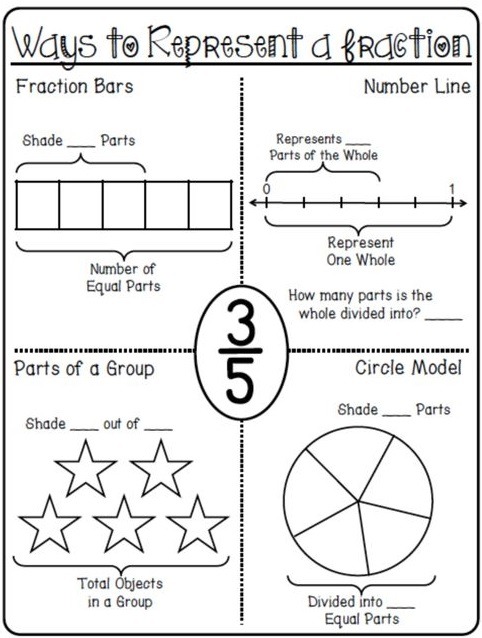Are you one of those teachers that loses sleep every time you have to teach your class fractions? Sure, not all math is challenging to teach, but fractions are a complex concept for many students.
Even students who understand the basics of fractions may find it challenging to apply that knowledge in real-life situations. It’s time to put an end to those sleepless nights because there is a surprisingly simple way of showing your students how fractions work without causing too many headaches – for you or your students.
To help your students grasp this tricky topic, you can use an anchor chart to illustrate the basics and have a lot of fun while you do it. Anchor charts are visual aids that allow students to see examples and explanations at a glance – and quickly.
Because anchor charts are primarily visual, it’s much easier for you to translate the meaning of fractions into relatable real-life objects or situations. For younger kids, it might even be as simple as showing them half an apple pie or a slice of pizza.
The fun part is that there are no set rules for creating an anchor chart. Creativity is encouraged, and your students can be involved in the process of making it. For example, using an anchor chart to introduce fractions will help your students get it in ½ the time – or maybe even ¼. See what we did there?
Table of Contents
- Elements of a Good Fraction Anchor Chart
- Different ways to use anchor charts to teach fractions
- Fraction Resources From Teach Simple
- More awesome fraction resources
Elements of a Good Fraction Anchor Chart
There is a variety of ways to construct an anchor chart. You can write key terms and definitions on poster-sized paper. You can also create a visual image or graph like a flow chart or Venn diagram. It’s up to you and what you consider the best way to get the point across. Here are a few thought starters.
Start with the basics
The concept of fractions starts simply enough. But for students who are not entirely confident with math, it can become overwhelming and go downhill quickly. That’s why it is best to break the concepts down to their simplest form and work your way up. Of course, it all depends on the grade you teach and the student’s prior knowledge, but let’s assume you are teaching younger students and building a foundation from there.
Be visual
The best way to understand fractions is to see them in action. So let the students use manipulatives to represent fractions and then display the concept on a chart. Use bright colors and clear labels. Differentiate examples with different colors to make them stand out.
Define what a fraction is
A clear definition is essential, but it won’t mean much if the students don’t have a concrete example to make it real to them. So come up with a definition together. One where the language makes sense to the students. You can even come up with different phrases that imply the same meaning.
I said this before, but it’s worth saying again. Start simply. Younger students will understand the concept of a half or a quarter if they can see it.
Create a working document
Create a space with plenty of room to build on visuals as you cover more content and strategies.
Teach the vocabulary of fractions
When introducing any new concept, defining the key terms is essential. Start by writing the “language of fractions” on your anchor chart. Include basic terms that apply to fractions in general first. Then add the more specific terms as you cover them.
The most essential terms include:
- numerator
- denominator
- half
- quarter
- equal
You can then include the names of the different fractions – like proper, mixed, improper, equivalent, etc. Once the terms are covered, encourage students to interact with the chart. This list obviously continues to grow as you go. When you get to concepts like simplifying, adding and subtraction fractions, make sure you have the steps on a chart for the students to refer to.
They can touch the words, read them aloud, or relate them to something they already know, like, say, the segments of an orange. This will help them to retain the information better.
Introduce Basic Fractions
Once you’ve defined what a fraction is, it’s time to break down the different types of fractions you’ve illustrated in more detail. Start by writing out the three types of fractions you’ve defined above — proper, mixed, and improper.
Show Them How to Work with Fractions
Now it’s time to give them a problem to solve (with your help, of course). Remember, if you have your students write the problem down as you illustrate it, they’ll be more likely to remember it.
You can use different colored markers to show your problems’ numerators and denominators. Encourage the students to interact and ask questions. That’s always more fun.
Different ways to use anchor charts to teach fractions
Let’s look at how anchor charts can be used differently to highlight fractions and their various properties.
- Define And Display
Create a chart with a clear definition, basic vocabulary and simple examples that are relatable.
By Kristine Nannini
From North Coast Community Services
From We Are Teachers
From Coffee Cups And Lesson Plans
From The Applicious Teacher
- Build A Fraction Wall Together
A fraction wall is a visual representation that helps students learn, compare, and identify fractions. This is a wonderful way to help students grasp the fundamentals of fractions. Fractions can be hard to understand, but tools like the fraction wall can help kids see the connections between fractions, multiplication, and division. This gives them a solid foundation to build on as they progress.
From Weebly
By Paula Kluth
- Use A Number Line
Using number lines, students can visualize the parts of a whole that each fraction represents.
From We Are Teachers
From Weebly
- Build As You Go
These anchor charts should be filled out over several weeks as you teach each concept, starting with the template. You’ll end up with a great reference chart to leave hanging in the room for the rest of the year.
From Teaching With A Mountain View
From Teaching With A Mountain View
From Teaching With A Mountain View
From Teaching With A Mountain View
- Break It Down
A fraction bar is a visual representation of fractions that helps students compare fractions and perform operations.
By Kathryn Chinchen
From Beacon Hill School
- Show Different Representations
The more ways you can demonstrate the same fraction, the easier it is for students to understand.
From North Coast Community Services
Fraction Resources From Teach Simple
- Introduction To Fractions Anchor Charts By Teachers R Us Homeschool
This introduction to fractions anchor chart comes with all the pieces you need to print and assemble for display in your classroom.

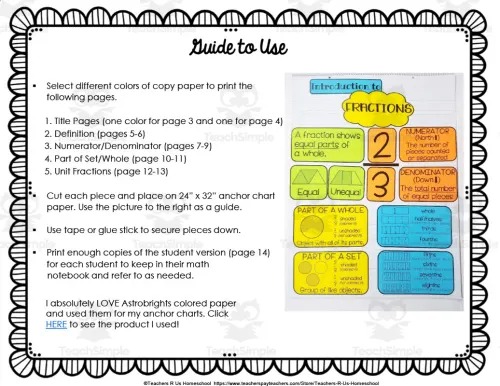
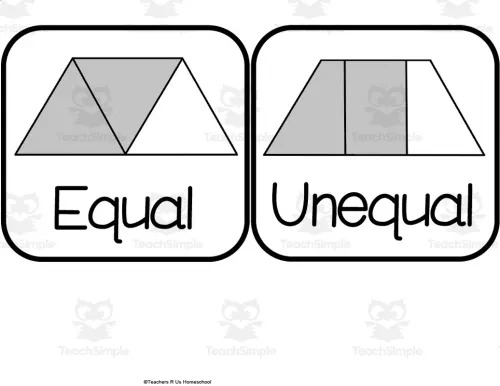
- Fraction Posters By Teachers R Us Homeschool
These posters are great for introducing fractions as they make the perfect visual. You may choose to print them for display in your classroom or print them to be inserted into student math journals.



- Fraction Flashcards By Teachers R Us Homeschool
This is an excellent set of Grab & Go flashcards to be printed, hole-punched and then gathered with a binder ring. Students will identify fractions as parts of a whole, parts of a set, and on number lines. You may find that these work well as an early finisher activity, in small groups, or a math station.



- Chocolate Bar Fractions By Teacher’s Clipart
This is great for fractions, units, counting, and place value. It’s simple and perfect for younger grades.

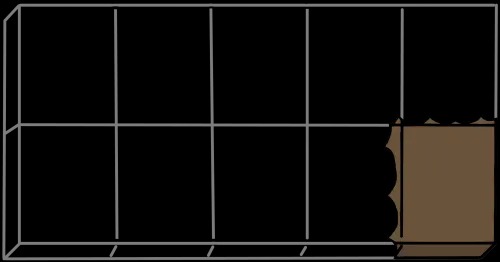

- Representing Fractions Anchor Chart By Teachers R Us Homeschool
This resource has everything you need to develop an anchor chart with your students. It covers strip diagrams, number lines, parts of a set, and parts of a whole.


- Digital Packs
Teach Simple has a whole library of interactive digital units. These interactive slides provide students with a resource for reviewing, practicing, and enhancing their understanding of fractions. The lessons are entirely digital, eliminating the need for paper! Students drag, drop, and sort pictures to create a self-grading quiz. This is an ideal resource to assign in your virtual classroom.
Equivalent Fractions By Markers And Minions


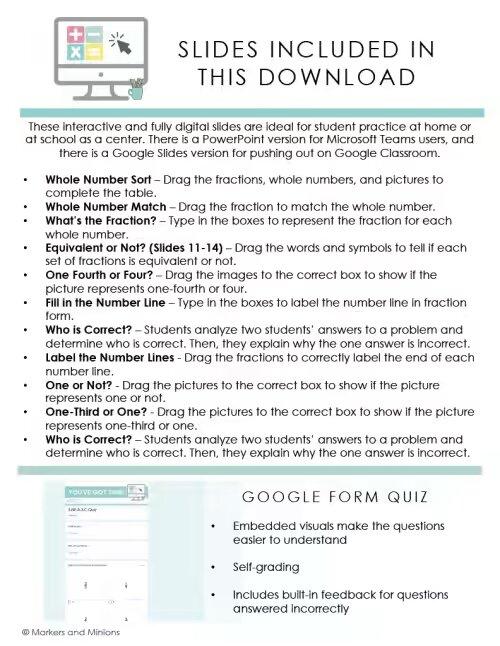
Fraction Equivalence And Ordering By Markers And Minions
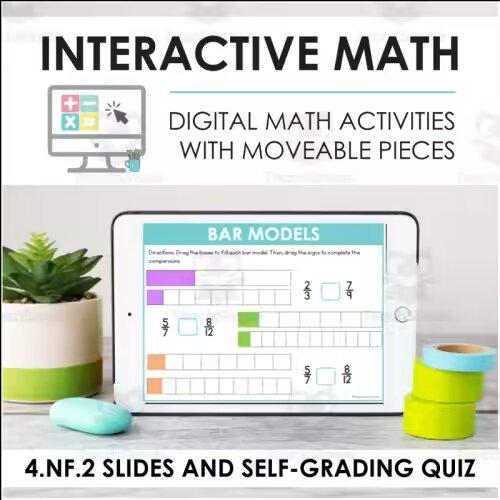
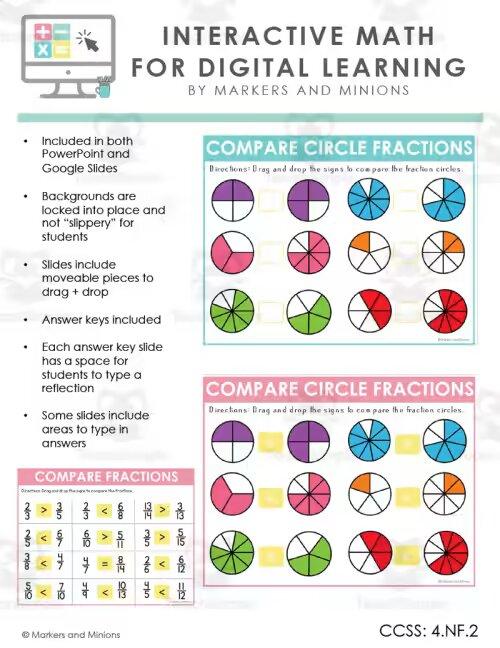

Comparing Fractions By Markers And Minions



Dividing Fractions By Markers And Minions



Whole Numbers As Fractions By Markers And Minions


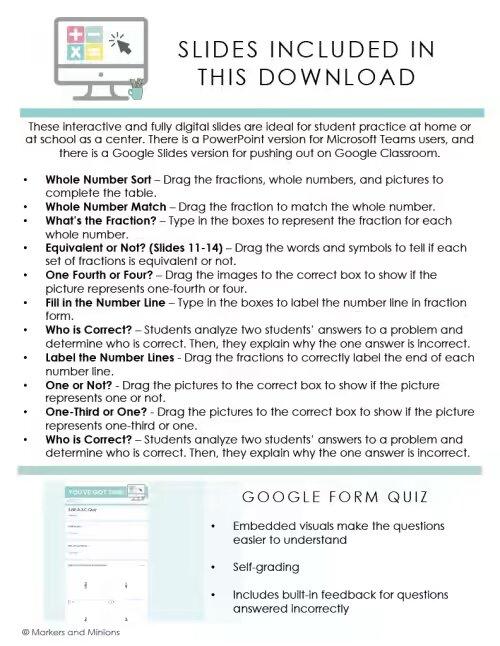
- Frac Smack Fractions Activity By Have Fun Teaching
A fun review game to see how well your students identify fractions.
- Printable Pie Fractions By Homegrown Hearts And Minds
With pie fractions, your students can see how the pieces relate. The one whole pie piece will fit all of the other fraction pieces. For example, you can show your students how ½ plus ½ equals one whole by placing the two ½ pieces on top of the one whole pie piece.



- 5-in-1 Fraction Activities By Breeze Through Math
This pack contains five fun activities perfect for practicing skills.



- Printable Math Game: Adding Fractions By Life Beyond The Gradebook
This interactive math game includes sheets for your students to record their answers, an answer key and forty math problems to print out for them to work on.



- Fly Your Fractions! By Markers And Minions
These colorful kites will brighten up your classroom and bulletin boards while reinforcing concepts of fractions.


- Adding And Subtracting Fractions Scavenger Hunt By Made 4 The Middle
This scavenger hunt will challenge your math students in a fun way.
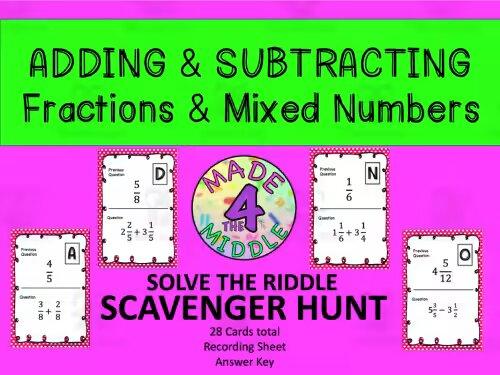

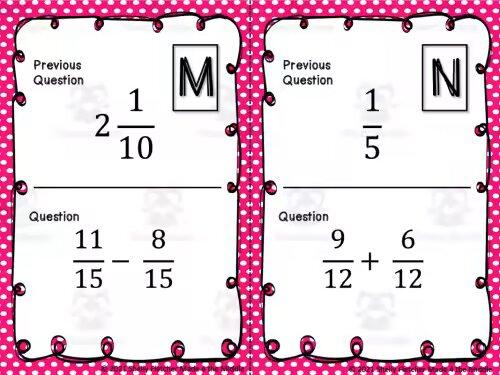
More awesome fraction resources
- Fraction Printables – Anchor Chart Bundles From Made By Teachers
These anchor chart bundles show various concepts, and you can use what you need as necessary.
Fractions Math Center Bundle From Runde’s Room
- Penguin Fractions By Laura Candler
These cute cards have penguin fractions on one side and fraction bars on the other, providing visual representations to assist children in comprehending concepts.
- Fraction Models Graphic Organizer From Homeschool Giveaways
This simple graphic organizer will help your students model fractions using four representations: fraction bars, fraction circles, number lines, and parts of a group.
- Fraction Printables Jackpot! From Create Teach Share
Over eighty pages, complete with teaching guides, worksheets, word problems, quizzes, and a final assessment
- Divisibility Rules Bulletin Board Poster From Middle School Math Resources
This divisibility rules poster is a must-have for any 4th, 5th, or 6th grade math class. It will look beautiful on your sound wall and it will help your students with division.
Now that you know the basics, it’s time to get creative. You can use an anchor chart to display fractions and consolidate concepts in various ways. The possibilities are endless. Anchor charts are especially effective when you need to break up a lesson into bite-sized, easy-to-digest chunks. And fractions definitely fit the bill.


